Making Room in the New Seattle (Part 2)
This is Part 2 of a story about pro-housing activism in Seattle, Washington. Read Part 1 here.
They call it the "Seattle process." It even has its own Wikipedia entry:
The term has no strict definition but refers to the pervasively slow process of dialogue, deliberation, participation, and municipal introspection before making any decision and the time it takes to enact any policy. An early definition came from a 1983 editorial in the Seattle Weekly, "the usual Seattle process of seeking consensus through exhaustion."
Seattle's housing activists—a strikingly broad coalition of pro-tenant, anti-displacement, racial justice, urbanist, environmentalist, and pro-market groups and individuals that I began to profile in Part 1 of this two-part series—have been playing the long game, and know a thing or two by now about "seeking consensus through exhaustion."
But that approach makes for frustrating pitched battles between those who benefit from delay and those who are threatened by inaction—say, homeowners secure in their ability to afford a home and stay in their neighborhood, versus renters who might be one rent hike or job loss away from having to leave the city they love and never move back.
After all, inaction is a policy preference too, not a neutral position.
According to activist and Housing Connector program manager Angela Compton:
"The people who are fighting things like [Mandatory Housing Affordability, an inclusionary zoning policy for designated "urban village" areas] are on the front lines, ready to sue the policy before many people who are struggling and care about affordability even know what policy is being talked about. It took so much work to get MHA over the finish line. I was hired for 6 months and ended up in it for almost 2 years—being stonewalled in court by people with money who could use the system to try and stop affordable housing policies."
So what would it take to get Seattle to the point where the market meets most of the city's need for affordable homes on its own, without years of political mobilization to pass policies that tinker at the margins?
On the day of the MHA vote in March 2019, The Urbanist published an in-depth "how we got here" retrospective that is an insightful look into the Seattle Process, and the political realities that led to the particular package of reforms passed so far.
“What would it take to get Seattle to the point where the market meets most of the city’s need for affordable homes on its own, without years of political mobilization to pass policies that tinker at the margins?”
Most notably, as early as 2015, Seattle leaders flirted with a citywide upzone of all residential neighborhoods to allow the next increment of development: duplexes, triplexes, and stacked flats in single-family zones. This is essentially the same policy that the City of Minneapolis and the State of Oregon would later draw national attention and much praise (including from Strong Towns here and here) for embracing; in an alternate universe, Seattle could have beaten them to the punch by years. It was one of 65 recommendations in former mayor Ed Murray's sweeping HALA (Housing Affordability and Livability Agenda) initiative, an attempt to reframe the whole housing debate with a holistic package of policies that addressed nearly every niche concern about growth and displacement.
After the Seattle Times scooped the story about the single-family upzone proposal, a political cacophony of outrage and misinformation erupted, and Murray hastily withdrew that part of the HALA package. One part that survived, in somewhat evolved form, was the MHA program finally passed in 2019, in which developers can build significantly more intensely in 27 city-designated "urban villages" but must either provide 5% to 11% rent-restricted affordable homes, or pay into a City fund to build such homes.
MHA, according to Calvin Jones of Tech4Housing, was presented by city officials as a "grudging concession to developers" in order to get affordable housing built. Jones thinks that was a necessary political reality, with anti-developer sentiment strong in Seattle.
"I view MHA as a big mobilizer. At the beginning of the process, we didn't really have a lot of groups out there. MHA helped strengthen the pro-housing consensus in the city, and unite people under a common banner. I think this has really teed up [the issue of housing affordability], and shifted momentum in our direction.
The 2019 council elections are going to be a determining factor about whether single-family zoning is up next."
The big outstanding question is whether MHA will actually help lower rents and stem the tide of displacement in Seattle. It is representative of a type of policy that some urbanists and economists are critical of because of its possible unwanted side effect of dampening the market for any new development. (Here’s a critique of IZ by the Mercatus Center, and here’s a defense from Seattle blog The Urbanist’s Owen Pickford.)
Nearly everyone seems to agree that to the extent that inclusionary zoning produces new affordable units, it won't be nearly enough to meet the enormous need in Seattle for places to live. But neither, says Jones, will upzoning across the board meet the need for deeply affordable homes for those earning, say, 60% of the area's median income. "I don't think there's any credible argument" that market-rate development will serve those households in the foreseeable future, he told me.
The Seattle Process encourages an emphasis on coalition-building and a pragmatic, "Yes, and..." approach that can result in policies that really do help people, or at least are effective band-aids. But if an ounce of prevention is worth a pound of cure, what would effective prevention look like to make sure the next front isn’t another years-long, rancorous policy process and spate of lawsuits along the way?
Letting All of Seattle’s Neighborhoods Grow and Evolve
The next frontier, says architect and urban designer Ace Houston, is opening up all of Seattle to incremental change and evolution, not just the urban villages. The big frustration among those who would like to go this route, according to Houston, is that MHA is already perceived as a compromise given the years of wrangling that went into it, and yet it doesn't go nearly far enough.
Recent “urban village” development in West Seattle (Photo by Joe Wolf via Flickr)
Roughly 8 percent of Seattle's land is within the urban villages affected by MHA. The program attempts to strike a bargain similar to what Austin attempted with its ill-fated CodeNEXT initiative (Ace, an Austin native, has also been involved in housing advocacy there): allow dramatic increases in development intensity in select pockets of the city, in exchange for leaving much larger single-family zones more or less untouched. This is an inequitable approach, says Houston:
“The Urban Village approach is effective at getting housing built, and given the large gap we have here—we need something like 14,000 units of publicly subsidized affordable housing to make up the gap—it gets us part of the solution.
But we've targeted a lot of the change to the places where low-income people and people of color live. They bear the brunt of it. Meanwhile, lots of Seattle is still off-limits to change, and these areas are wealthy areas.”
Another problem is the potential for the city's focus on Urban Villages to lead to greater incentives for speculative, transformative development in those areas. Strong Towns’s Chuck Marohn has written about the problems that arise with spot upzoning—allowing large leaps in development intensity in small areas, like the replacement of single-story commercial buildings with a city-block-sized, mixed use complex. These problem include driving up the value of land, as the owners of those older, smaller buildings wait and hope to cash out for a windfall. Many of them never will; simple population math ensures that. So intense clusters of redevelopment may well be matched by broad swaths of stagnation and stasis outside the cluster. Meanwhile, that top-down, concentrated redevelopment risks displacing communities, or at least community-oriented businesses and institutions, from very specific locations in which they were long established.
Another problem? The type of development occurring, and envisioned, in Seattle’s urban villages is far from cheap to build. Especially with layers of regulatory constraints and obligations as part of the process. A program to allow more housing that restricts that housing to 27 urban villages in a city of over 700,000 (and where 81% of residential land is still zoned single-family) is a program that is unlikely to allow small-scale developers in on the game, or the creation of a significant amount of missing-middle housing—small rental buildings like triplexes or row houses that are the absolute least expensive way to build homes for people.
Allowing the Missing Middle in Seattle’s single-family neighborhoods died a swift death on the political rocks in 2015. But Ace Houston thinks the city will circle back around to the idea and that it might receive a different reception next time. In his professional life, he is interested in combatting narrow perceptions of how we design places where people can thrive. Houston is an architect and urban designer who runs House Cosmopolitan, a design firm that describes itself as “Innovative and Future-Thinking, Respectful of Regionality, Inclusive and Community Focused, Urban Revolutionaries and Culture Celebrators.”
“I’ve lived my whole life in rental housing,” he tells me. “There needs to be a really concerted look at how we design for people to live more closely while still recognizing their individuality, identity, and desire for privacy.”
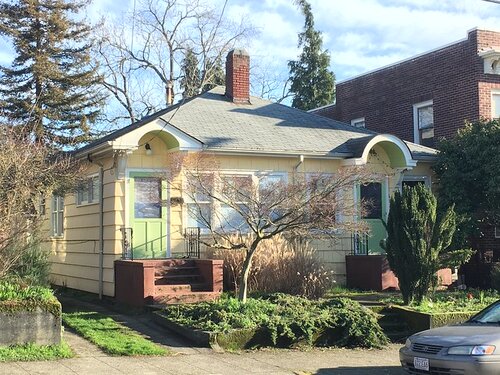
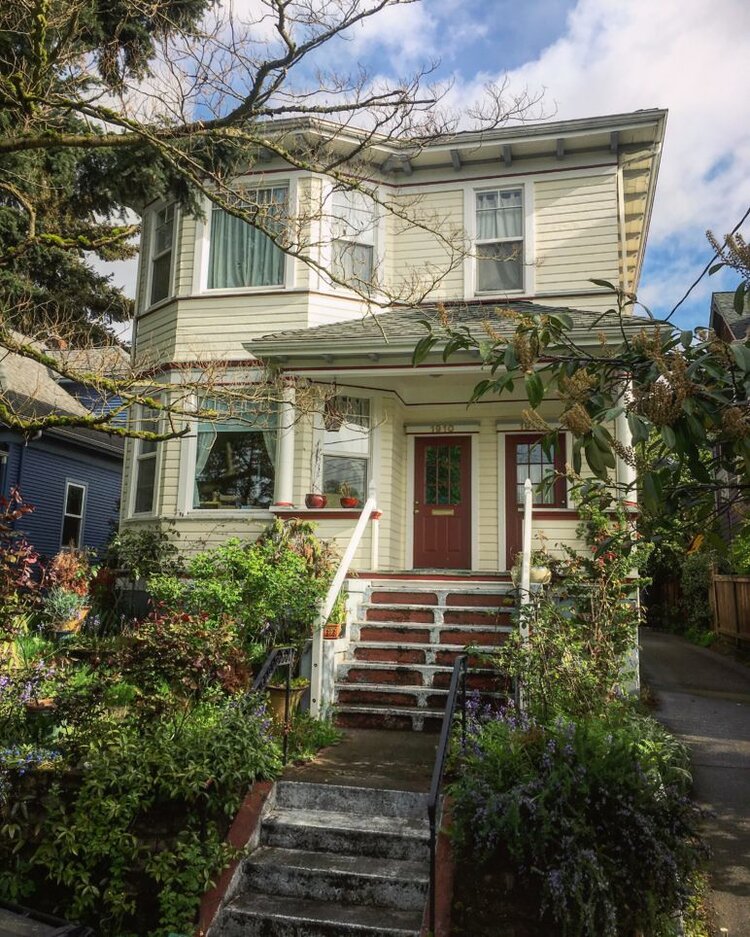
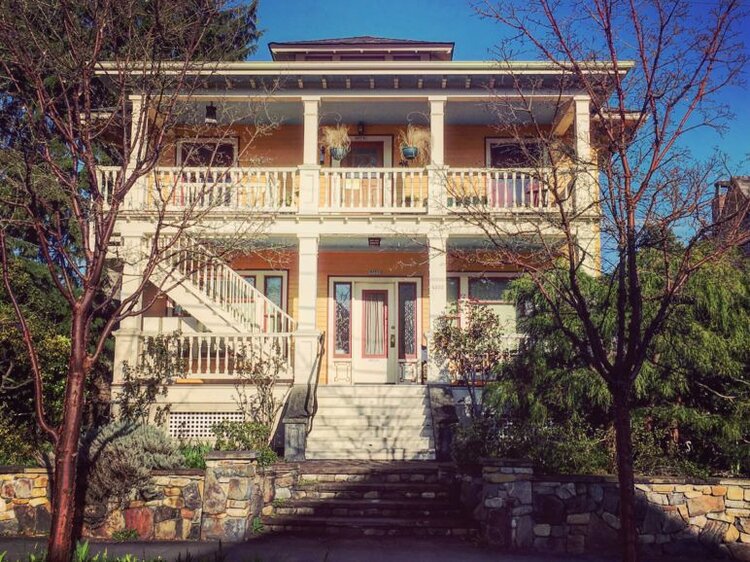
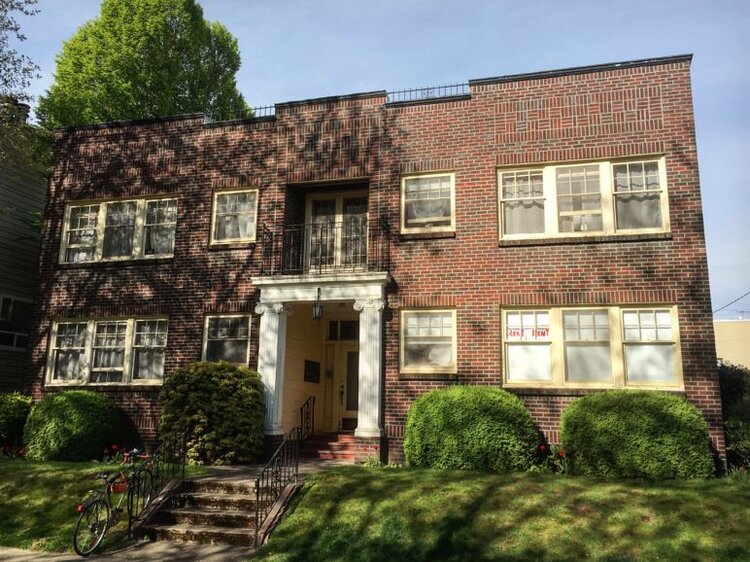
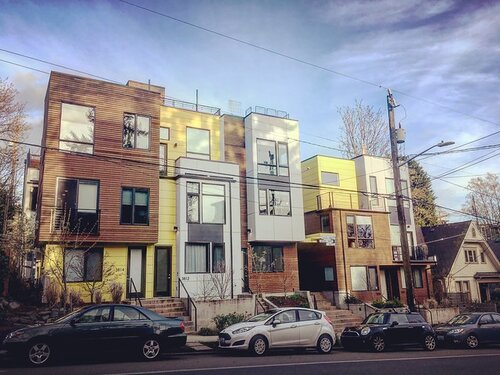
Seattle think-tank the Sightline Institute, another strong advocate of opening Seattle up to the next increment of development, is also working on changing public perceptions of what that increment could look like and whether it is a threat to the character of desirable neighborhoods (hint: it’s not). Sightline recently began to crowd-source a free Flickr database of photos of missing-middle housing. The goal: to help advocates normalize what, indeed, used to be completely normal everywhere before we started banning it, and to demonstrate that these building types are commonplace, compatible, and attractive in residential neighborhoods.
The "urban village" strategy has politically mobilized Seattle renters who want to be able to remain in Seattle. But it doesn't fundamentally disrupt the paradigm of a city under glass: the belief among some homeowners that your own neighborhood ought not to have to change, even as the city changes. And as long as it doesn't disrupt that paradigm, it's not likely to fundamentally change the way the market serves Seattle's needs.
Angela Compton thinks a lot of people out there would be “game for radical housing ideas” but don’t consider themselves interested in housing policy or know much about that world of activism:
“There are so many people living under rocks these days, trying to stay away from media because of all the horrible things that are happening in the world. And so they’re kind of missing the opportunity to advocate for good things. I have nerdy friends who are excited about these ideas when I tell them, but they’ve never heard of them. We need more people to hear about it. We need to make it mainstream.”
If we’re going to make it mainstream, then allowing the next increment of development everywhere needs to no longer be considered a “radical housing idea” at all. And here’s the thing: it isn’t.
For most of human history, in most cities, neighborhoods were not in stasis. They evolved in response to constant feedback, and as buildings were replaced or upgraded, these places grew incrementally denser, wealthier and more resilient over time. The most beloved placemaking experiments would persist; others would be undone. Fine-grained development, led by an army of small-scale developers instead of a few deep-pocketed ones, meant that the redevelopment process virtually never wiped out the whole character of a place in a short span of time.
We can see the legacy of this traditional development pattern in many of our most beloved places, throughout the world and in America alike. Including in Seattle. Now we just have to bring people on board with the value of getting back to it.

Daniel Herriges has been a regular contributor to Strong Towns since 2015 and is a founding member of the Strong Towns movement. He is the co-author of Escaping the Housing Trap: The Strong Towns Response to the Housing Crisis, with Charles Marohn. Daniel now works as the Policy Director at the Parking Reform Network, an organization which seeks to accelerate the reform of harmful parking policies by educating the public about these policies and serving as a connecting hub for advocates and policy makers. Daniel’s work reflects a lifelong fascination with cities and how they work. When he’s not perusing maps (for work or pleasure), he can be found exploring out-of-the-way neighborhoods on foot or bicycle. Daniel has lived in Northern California and Southwest Florida, and he now resides back in his hometown of St. Paul, Minnesota, along with his wife and two children. Daniel has a Masters in Urban and Regional Planning from the University of Minnesota.